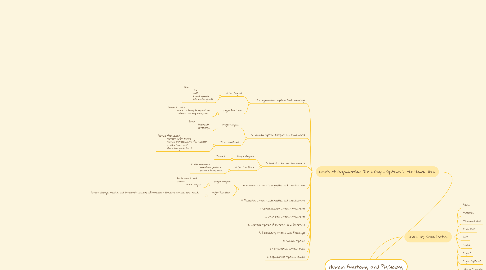
1. Anatomy Dictates Function
1.1. Anatomists rely on observation and dissection, while physiologists employ experimentation.
1.2. It is more common to discover new information about physiology but anatomical discoveries are being made as well.
2. Levels of Organization: The 11 Organ Systems in the Human Body
2.1. 1. Integumentary system (Body covering)
2.1.1. Major Organs
2.1.1.1. skin hair nails sweat glands sebaceous glands
2.1.2. Major Functions
2.1.2.1. Protect tissue regulate body temperature support sensory receptors
2.2. 2. Skeletal system (Support and Movement)
2.2.1. Major Organs
2.2.1.1. Bones ligaments cartilages
2.2.2. Major Functions
2.2.2.1. Provide framework protect soft tissue provide attachments for muscles produce blood cells store inorganic salts
2.3. 3. Muscular system (Movement)
2.3.1. Major Organs
2.3.1.1. Muscles
2.3.2. Major Functions
2.3.2.1. Cause movement maintain posture produce body heat
2.4. 4. Nervous system (Integration and Coordination)
2.4.1. Major Organs
2.4.1.1. Brain spinal cord nerves sense organs
2.4.2. Major Functions
2.4.2.1. Detect changes receive and interpret sensory information stimulate muscles and glands
2.5. 5. Endocrine system (Integration and Coordination)
2.6. 6. Cardiovascular system (Transport)
2.7. 7. Lymphatic system (Transport)
2.8. 8. Digestive system (Absorbtion and Excretion)
2.9. 9. Respiratory system (Gas Exchange)
2.10. 10. Urinary system
2.11. 11. Reproductive system: Male
2.12. 11. Reproductive system: Female
3. Anatomy and Physiology
3.1. Introduction
3.2. Definitions
3.2.1. Anatomy
3.2.2. Physiology
4. Levels of Organization
4.1. Atom
4.2. Molecules
4.3. Macromolecules
4.4. Organelles
4.5. Cells
4.6. Tissue
4.7. Organs
4.8. Organ Systems
4.9. Human Organism
5. Maintenance of Life
5.1. Life depends on five (5) environmental factors
5.1.1. 1. Water 2. Food 3. Oxygen 4. Heat 5. Pressure
5.2. Homeostasis
5.2.1. Definition = the tendency of an organism to maintain a stable internal environment
5.2.2. Example = maintenance of body temperature at 98.6ºF/37ºC.
5.2.3. There are two (2) types
5.2.3.1. 1. Negative feedback mechanisms
5.2.3.2. 2. Positive feedback mechanisms
